Articles & Chapters
- The Impact of Israel Experience Programs on Israel’s Symbolic Meaning
- Reconceptualizing Religious Change: Ethno-Apostasy and Change in Religion among American Jews
- Toward the Study of Community Effects on Jewish Engagement: The Case of Educational Enrollment
- Why Jewish Parents Send Their Children to Day Schools
- Who is Being Taught? Jewish Early Childhood Education’s Adult-Centered Approach
- Jewish Educational Travel
- From Shrine to Forum: Masada and the Politics of Jewish Extremism
- Ritualized Protest and Redemptive Politics: Cultural Consequences of the American Mobilization to Free Soviet Jewry
- Beyond the Field Trip: Teaching Tourism through Tours
- Constructing Jewish Belonging through Mass Tourism: Self-Narration in Israel Experience Programs
Articles in Academic Journals
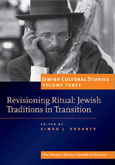 |
THE BUREAUCRATIZATION OF RITUAL INNOVATION The Festive Cycle of the American Soviet Jewry Movement Shaul Kelner. 2011. Jewish Cultural Studies 3:360-391. Since the 1960s, social movements have been key forces in the development of new religious rituals that are reshaping American Judaism. This article examines how the American movement to free Soviet Jews systematized and even bureaucratized the process of ritual innovation as it developed an annual calendar of activities pegged to the Jewish holiday cycle. |
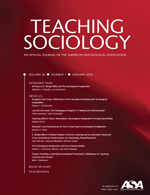 |
BEYOND THE FIELD TRIP Teaching Tourism through ToursShaul Kelner and George Sanders. 2009. Teaching Sociology 37(2):136-150. A course in the sociology of tourism offers an opportunity to examine a world-transforming force that is penetrating more and more aspects of social life. It also offers an opportunity to create a learning environment that uses the object of study as the medium of study. This article examines how instructors can use tourism to teach the sociology of tourism, and thereby help students develop an understanding of the subject matter through reflexive examination of classroom practice. Drawing on research in the sociology of tourism, it outlines a conceptual framework for thinking about tourism as a spatial practice that includes semiotic, interpersonal and cultural dimensions. Through examples, it shows how these dimensions can be synthesized into a pedagogical strategy that uses field trips and classroom learning to teach the sociology of tourism. The article addresses logistical and conceptual issues involved in course planning and implementation. |
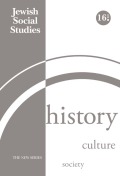 |
RITUALIZED PROTEST AND REDEMPTIVE POLITICS Cultural Consequences of the American Mobilization to Free Soviet JewryShaul Kelner. 2008. Jewish Social Studies 14(3): 1-37. The significance of the worldwide movement to free Soviet Jewry cannot be measured solely by its success in achieving its goals vis-à-vis Soviet Jews. It was also influential in shaping American Jewish political culture during the years it was active. During the 1960s and 1970s, and to a lesser extent in the 1980s, activists in the American movement to free Soviet Jewry helped construct a public political culture that defined Jewish participation in the American identity politics of the era as a religious imperative. They contributed to the development of this religiously inflected Jewish identity politics by innovating protest tactics that advanced it not only through discourse but also through embodied, meaning-generating actions. By popularizing ritualization as a strategy of protest, Soviet Jewry movement activists in the United States subverted the conceptual dichotomies that distinguished expressive from instrumental dimensions of political action, and religious cosmologies from secular politics. Drawing on examples such as the Passover march, “Freedom Seder,” and “Matzoh of Hope,” this article considers three key strategies of ritualization: the invention of new ritual through bricolage; the movement of existing ritual out of its traditional space and into the public square; and the introduction of the public square into the traditional space of existing rituals. |
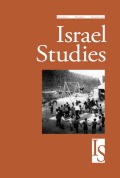 |
FROM SHRINE TO FORUM Masada and the Politics of Jewish ExtremismTheodore Sasson and Shaul Kelner. 2008. Israel Studies 13(2): 146-63. Zionist collective memory has long associated Masada with the struggle to secure Jewish sovereignty over the land of Israel. This article examines the effects of the political upheavals of the Oslo and post-Oslo periods on the meanings ascribed to Masada. It documents the popularity of a critical counter-narrative in tour guides’ presentations of Masada to diaspora Jewish tourists. Directly informed by memories of the Rabin assassination, this critical counter-narrative emphasizes the dangers posed by Jewish extremists adhering to messianic religious ideologies. The focus on internal rather than external threats to Jewish sovereignty represents a sharp break with past framings of Masada’s meaning. The paper discusses the implications for the study of political culture and collective memory. |
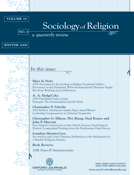 |
RECONCEPTUALIZING RELIGIOUS CHANGE Ethno-Apostasy and Change in Religion among American Jews Benjamin Phillips and Shaul Kelner. 2006. Sociology of Religion 67(4): 507-24. Drawing on data from the NJPS 2000-1, we argue that traditional approaches to the study of religious mobility – both apostasy and switching – are increasingly problematic. Apostasy from ethno-religious communities, in particular, must be refomulated to incorporate an ethnic dimension. Analyses using this revised concept of “ethno-apostasy” lead to results that at times diverge from those of previous research. The findings suggest that the premise that religious switching is a binary change from one mutually incompatible state to another must be reconceptualized to account for declining support in American society for the assumption that a person can hold only one religious afiliation at a time. |
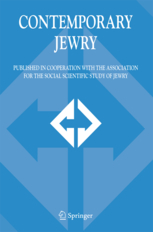 |
THE IMPACT OF ISRAEL EXPERIENCE PROGRAMS ON ISRAEL’S SYMBOLIC MEANING Shaul Kelner. 2003-4. Contemporary Jewry 24: 124-154. Ethnographic study of Israel experience programs reveals processes by which Israel becomes cognitively and affectively meaningful to American Jews. A Durkheimian analysis suggests that feelings generated by an intense group experience are preserved in symbolic residue that re-evokes these feelings. For American Jewish travelers, Israel comes to serve as a summarizing symbol, integrating a multitude of normative and non-normative meanings, and allowing for variability and idiosyncrasy. |
Connect with Vanderbilt
©2024 Vanderbilt University ·
Site Development: University Web Communications